45 Fascinating Animals That Start With “A”
Welcome to a captivating exploration of the animal kingdom, where we shine a spotlight on an extraordinary ensemble of creatures that all share one thing in common: their names begin with the letter A!
Prepare to be enthralled as we journey through an alphabet of awe-inspiring animals, focusing solely on those whose identities start with the magnificent letter A. From the majestic to the minuscule, the mighty to the mysterious, we’ve curated an eclectic list that is as diverse as it is fascinating.
Get ready to meet nature’s A-listers. Discover enchanting mammals that roam the plains, soar through the skies, and swim in the depths of the ocean. Marvel at reptiles that possess remarkable adaptations, insects that captivate with their intricate designs, and birds that mesmerize with their vibrant plumage and melodic calls.
Whether you’re a devoted wildlife enthusiast, an aspiring naturalist, or simply someone seeking to expand your knowledge and appreciation for the animal kingdom, this compilation is designed to pique your interest and leave you with a newfound sense of wonder.
So, come along on this extraordinary journey where we celebrate the amazing creatures that proudly bear the letter A in their names.
From the familiar to the extraordinary, the iconic to the obscure, let’s delve into the realm of animals that begin with A and embark on a thrilling adventure like no other. Let curiosity be your guide as we uncover the magic of these remarkable beings. Let’s begin!
Animals That Start With “A”
01. Aardvark
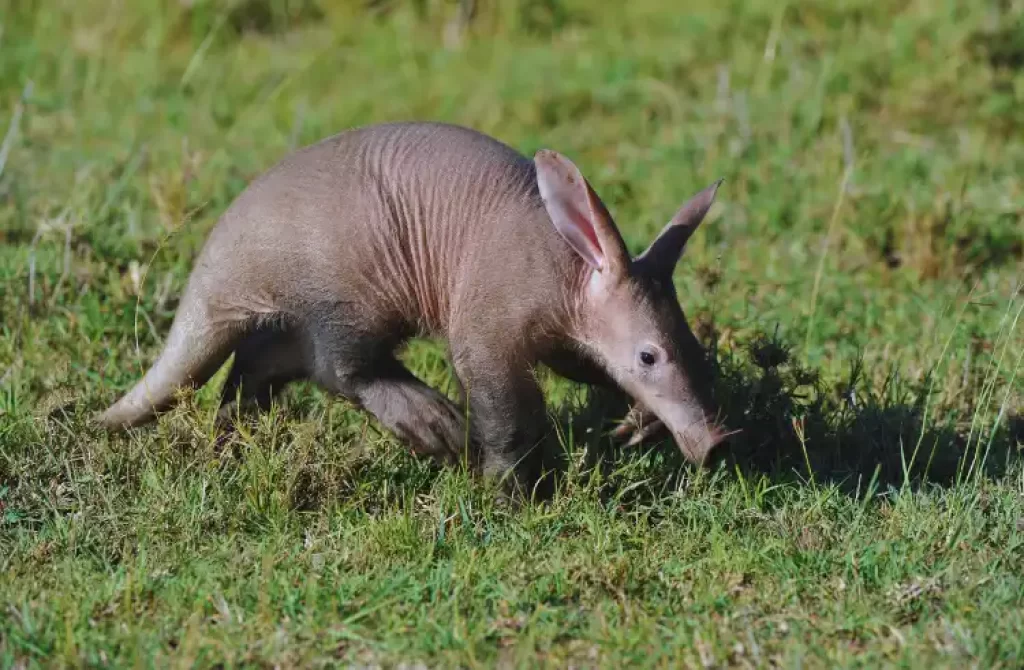
The aardvark is a fascinating creature that captivates with its peculiar appearance and remarkable adaptations. Native to Africa, this nocturnal mammal is well-known for its long snout, which is perfectly suited for its specialized diet.
With a keen sense of smell, it uses its powerful claws to dig into termite mounds and ant hills, extracting its primary source of food.
The aardvark’s unique anatomy, including its large ears and stout body, further contribute to its ability to thrive in its environment. Despite its somewhat unusual appearance, the aardvark plays a crucial role in maintaining ecosystem balance by controlling termite populations, making it an essential component of African habitats.
02. African Elephant
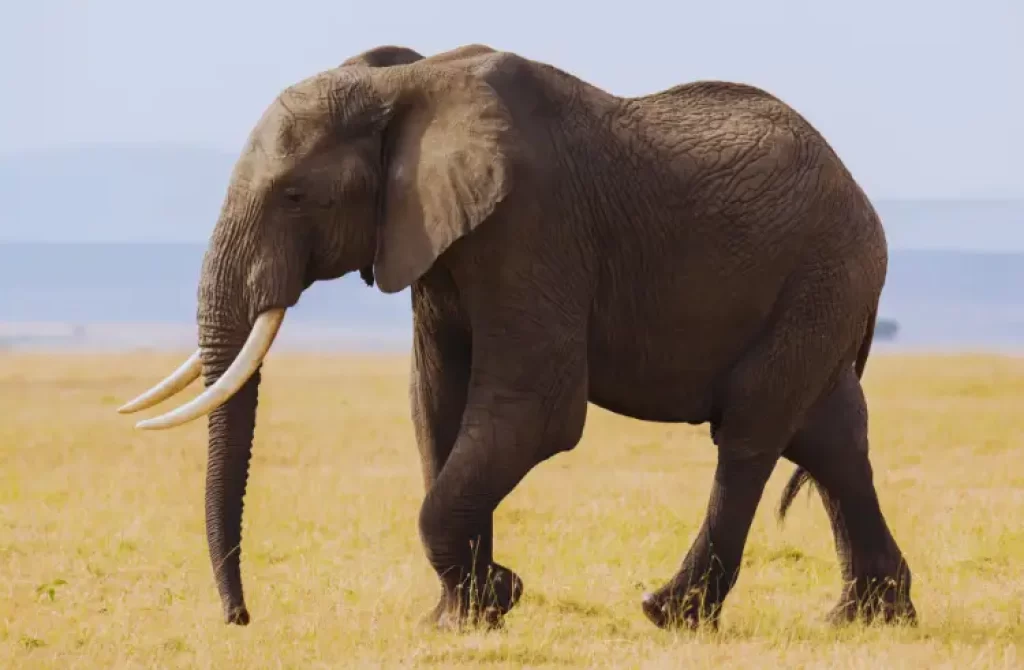
The African elephant, known for its majestic presence and awe-inspiring size, is truly a symbol of power and grace. As the largest land animal on Earth, it commands attention with its massive body and distinctive features.
These gentle giants possess a high level of intelligence and complex social structures. Living in close-knit family groups led by matriarchs, African elephants exhibit remarkable empathy, communication, and memory skills.
Their trunks, which serve multiple functions, including grasping objects, breathing, and communication, are a testament to their remarkable adaptability. However, African elephants face significant threats, such as poaching and habitat loss, highlighting the urgent need for conservation efforts to ensure their survival.
03. Albatross
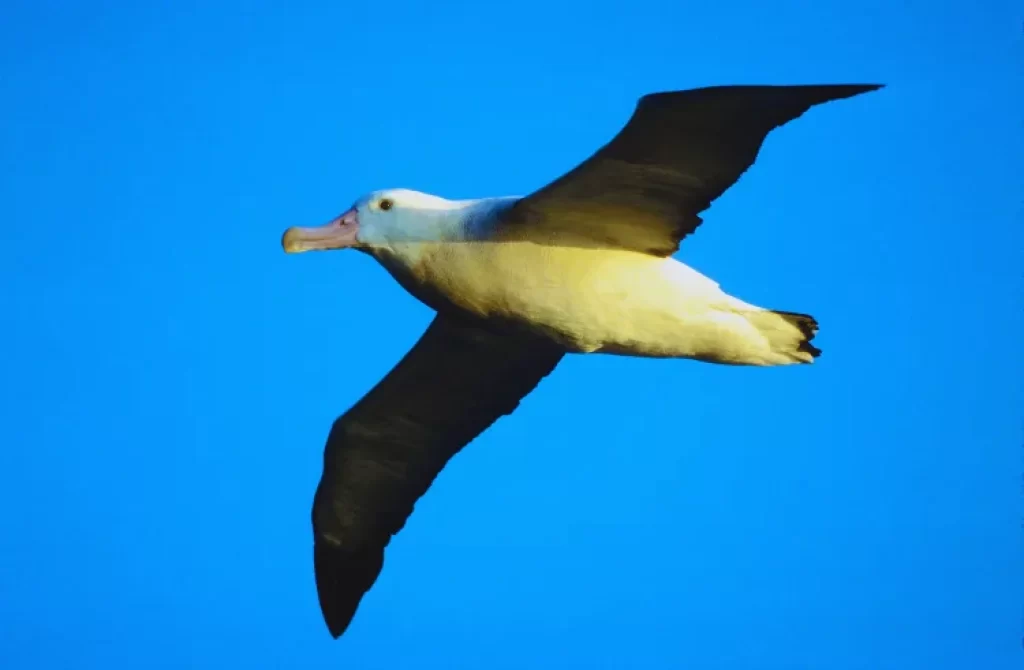
The albatross, with its impressive wingspan and graceful aerial maneuvers, is a true master of the open seas. These seabirds are built for endurance, spending the majority of their lives soaring above the vast ocean waters.
Their large wings enable them to glide effortlessly for long distances, utilizing air currents to conserve energy during their extensive foraging journeys. Albatrosses have a unique mating ritual, with pairs engaging in elaborate courtship dances that strengthen their bonds.
While they may appear elegant in flight, their land-based movements can be rather clumsy due to their specialized adaptations for life on the wing.
Albatrosses are also known for their longevity, with some individuals living up to several decades. However, they face numerous challenges, including entanglement in fishing gear and habitat degradation, underscoring the need for conservation efforts to protect these magnificent seabirds.
04. Alligator
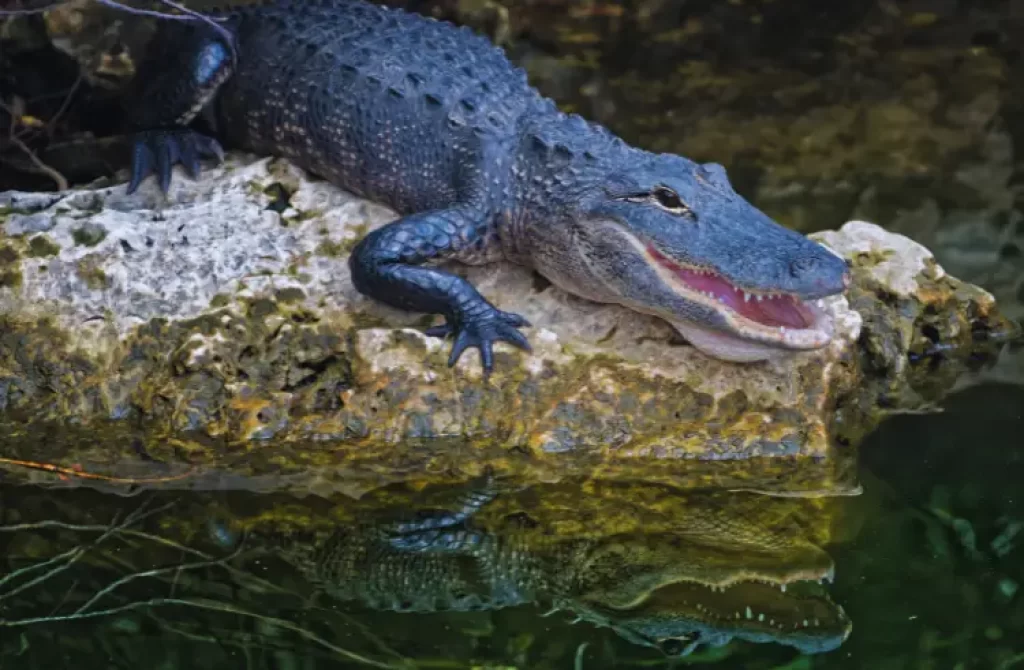
The alligator is a fearsome reptile that instills a sense of awe and respect in those who encounter it. Found in freshwater habitats across the Americas, these ancient creatures have perfected the art of survival over millions of years.
Their powerful jaws are lined with sharp teeth, designed for capturing and subduing prey. With a keen sense of stealth and patience, alligators lie in wait, often partially submerged, ready to ambush unsuspecting animals that venture too close.
They play a crucial role in maintaining the balance of their ecosystems by regulating prey populations. Despite their formidable nature, alligators are not mindless aggressors.
They are known to exhibit parental care, with mother alligators fiercely protecting their nests and young. Although they have faced significant threats in the past, conservation efforts have helped recover alligator populations, ensuring their continued existence in the wild.
05. Alpaca
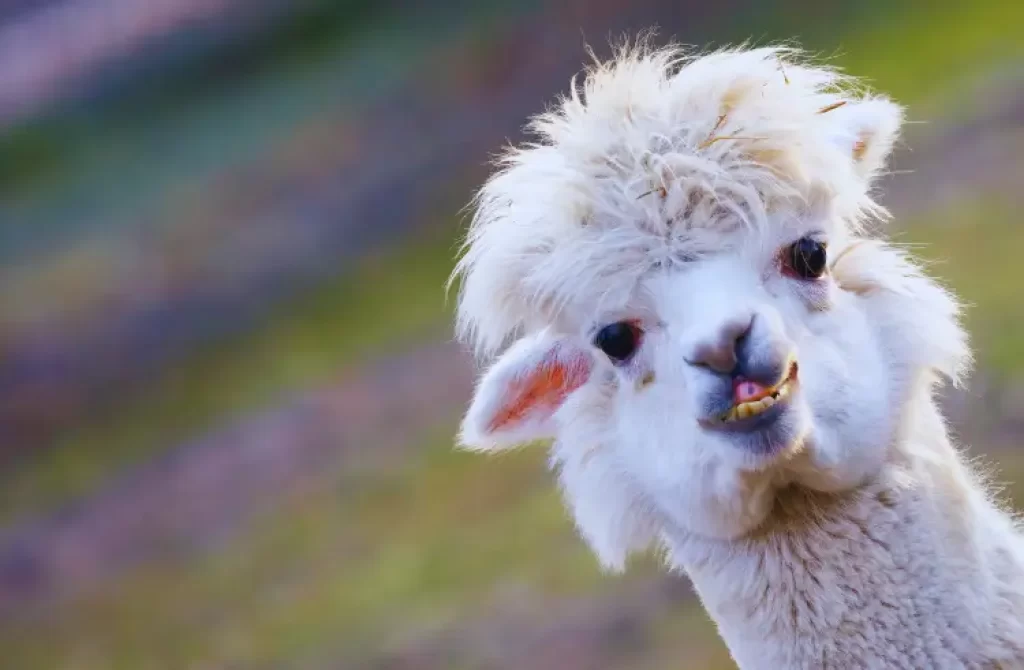
Alpacas are charming and sociable animals that have been domesticated for thousands of years. Native to South America, they are valued for their soft and luxurious fleece, which comes in a range of natural colors.
Alpacas have a gentle disposition, making them popular among farmers and animal enthusiasts alike. Their fiber is highly prized for its warmth, softness, and hypoallergenic properties, making it a sought-after material in the textile industry.
These herbivorous mammals have a unique digestive system, enabling them to efficiently extract nutrients from a diet consisting primarily of grass and hay.
Alpacas are social creatures, often found in herds, and they display communal behaviors that contribute to their overall well-being. Their endearing nature and valuable fiber have made them beloved companions and economic assets to many communities around the world.
06. Anaconda
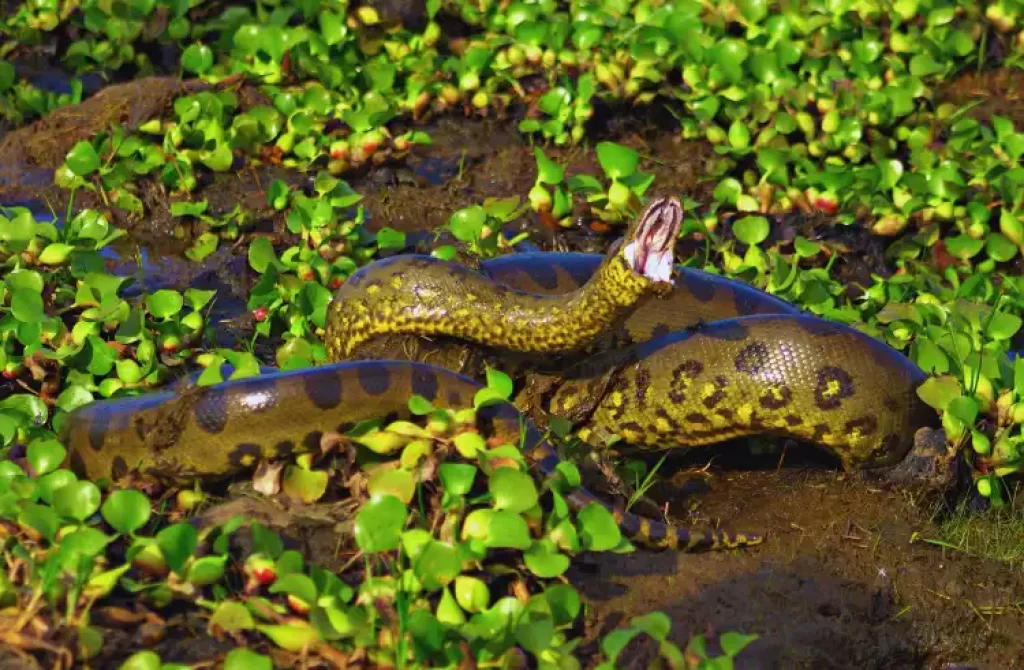
The anaconda is a creature that commands both respect and curiosity due to its impressive size and strength. Found in the tropical rainforests of South America, this massive snake is one of the largest in the world.
With a reputation that precedes it, the anaconda captures the imagination with its ability to coil tightly around its prey and constrict it to death. It is a non-venomous predator, relying on sheer force and ambush tactics to secure its meals.
The anaconda’s formidable size, reaching lengths of up to 30 feet, is a testament to its adaptability and success as an apex predator in its habitat.
Despite its fearsome reputation, encounters between anacondas and humans are rare, as they typically prefer to avoid confrontations. These enigmatic creatures play a vital role in maintaining the delicate balance of the rainforest ecosystem, serving as indicators of environmental health and biodiversity.
07. Angelfish
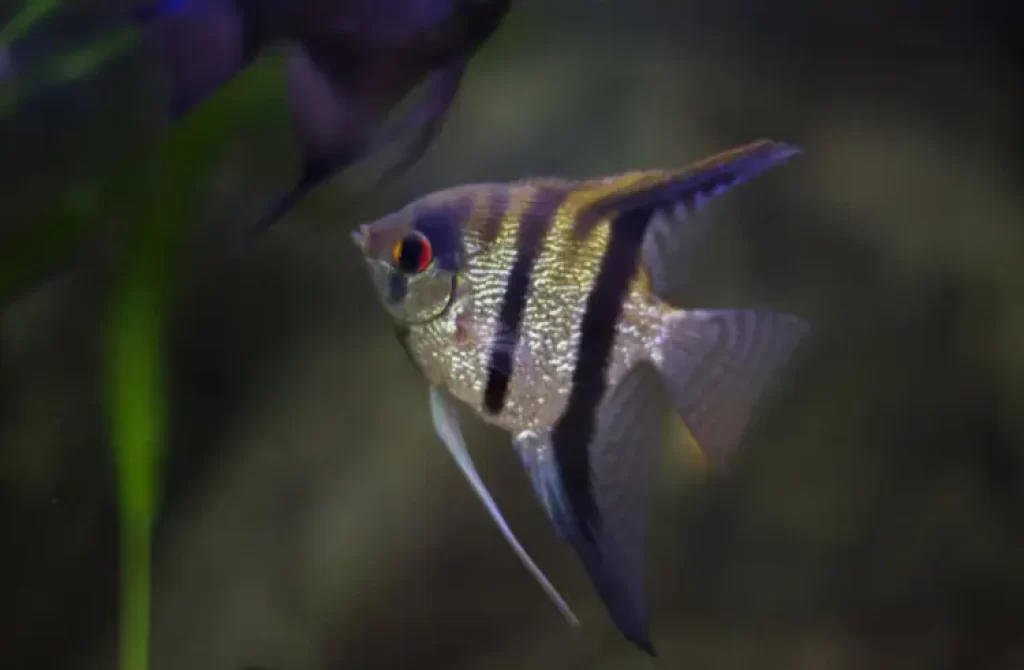
Angelfish are a captivating group of freshwater fish known for their vibrant colors, graceful movements, and delicate appearance.
With their striking patterns and flowing fins, they have become a popular choice for aquarium enthusiasts worldwide. These tropical fish are native to the Amazon River basin and other freshwater habitats in South America.
Despite their beauty, angelfish are known for their territorial behavior and can exhibit aggression towards other fish sharing their space. Proper care and a well-maintained aquarium environment are essential for the health and well-being of these mesmerizing creatures.
Their ability to adapt to varying water conditions and their graceful swimming make them a delightful addition to any aquarium setting, captivating observers with their serene presence and elegant form.
08. Anteater
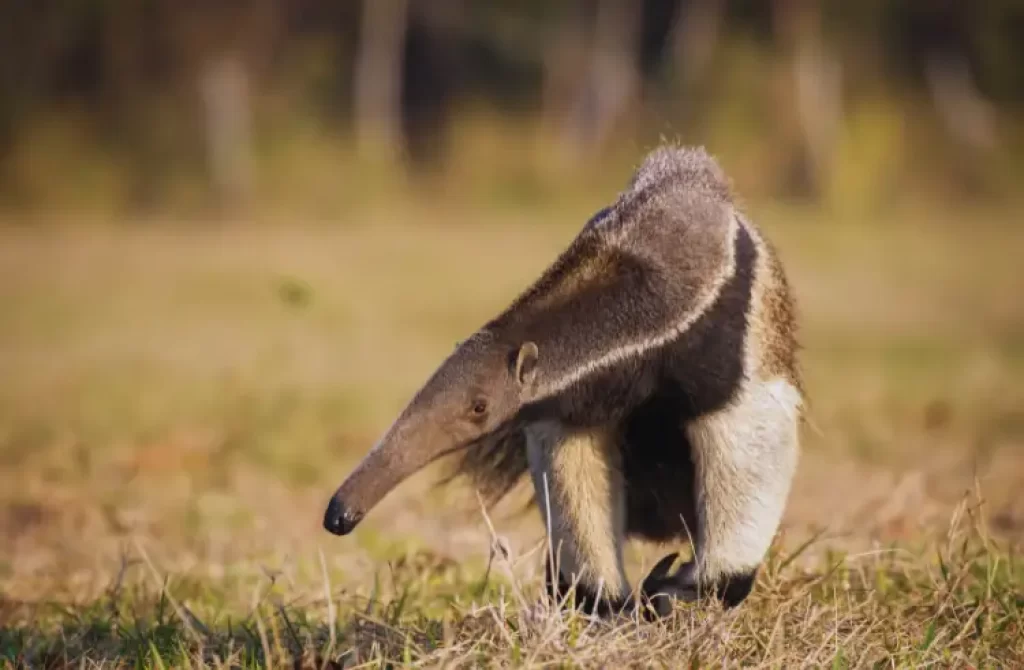
Anteaters are remarkable creatures with distinctive physical characteristics that set them apart from other mammals. Found in the diverse ecosystems of Central and South America, they have evolved to become specialized insectivores.
Their long, slender snouts and extended tongues allow them to probe deep into ant and termite colonies, extracting their prey with remarkable precision.
Anteaters have sharp claws on their forelimbs, which they use to tear open termite mounds and ant nests. Their unique adaptations and feeding habits have led to a fascinating coexistence with the insect world, making them an integral part of the intricate balance of their ecosystems.
09. Antelope
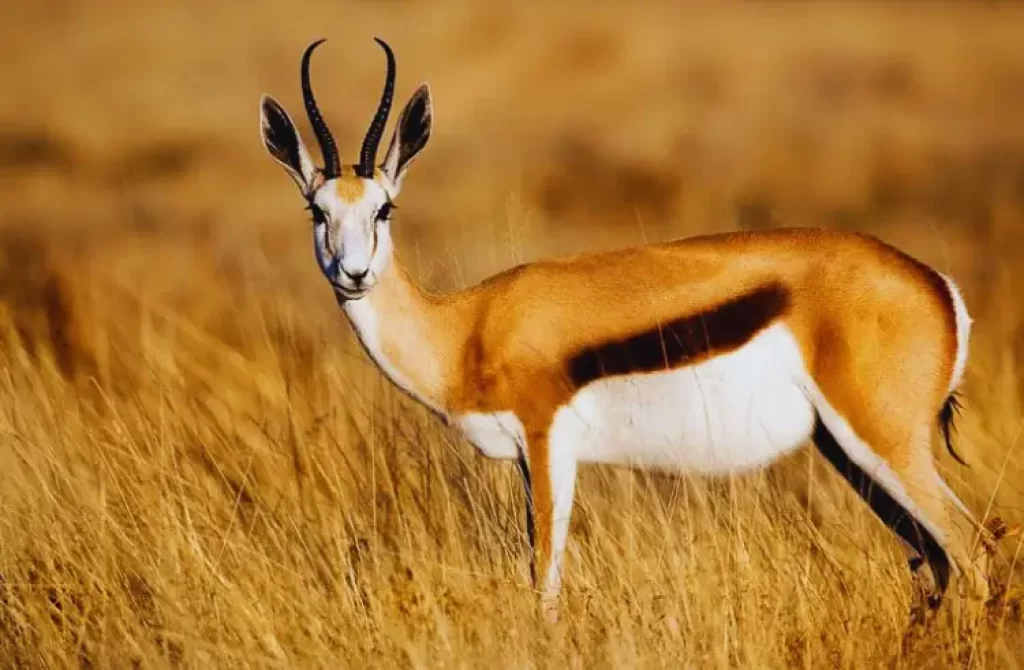
Antelopes are graceful and agile herbivores that roam the vast landscapes of Africa and parts of Asia. They have evolved to thrive in various habitats, including grasslands, savannas, and forests. Known for their incredible speed and agility, antelopes have adapted to avoid predators and efficiently forage for food.
Their slender bodies, powerful legs, and keen senses enable them to detect danger and swiftly navigate their surroundings.
Antelopes come in a wide range of species, each with its unique physical characteristics and behavior patterns. From the majestic impala to the iconic wildebeest, these captivating mammals represent the beauty and diversity of wildlife on the African continent.
10. Antlion
The antlion may be small in size, but it possesses extraordinary predatory skills that make it a true marvel of the insect world. As larvae, antlions construct conical sand pits, often referred to as “antlion traps,” to capture their unsuspecting prey.
They patiently wait at the bottom of these pits, buried beneath the loose sand, ready to strike when an ant or other small insect falls into their trap. The antlion’s elongated jaws and sharp mandibles allow it to seize its prey with precision and efficiency.
Once captured, the antlion injects enzymes into its victim to liquefy the internal tissues, making for easier consumption.
This unique hunting strategy and adaptation have earned the antlion a reputation as a skilled and cunning predator in the insect kingdom.
11. Ape
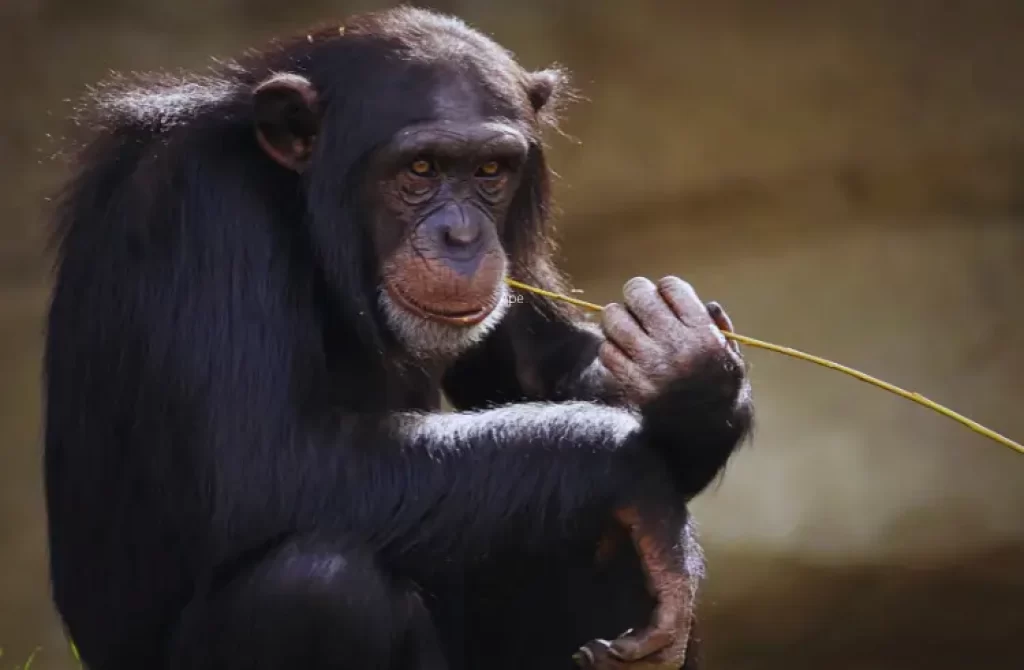
Apes are highly intelligent primates that share close evolutionary ties with humans. Gorillas, chimpanzees, orangutans, and bonobos are among the species classified as apes. These remarkable creatures inhabit diverse regions of Africa and Asia, displaying a wide range of social structures, behaviors, and adaptations.
Apes possess impressive cognitive abilities, tool usage, and complex communication systems. They exhibit intricate social dynamics and form deep emotional bonds within their social groups.
As our closest living relatives, apes offer valuable insights into our own evolutionary history and behavior. However, they face numerous threats, including habitat loss and poaching, making conservation efforts crucial for their survival.
12. Armadillo
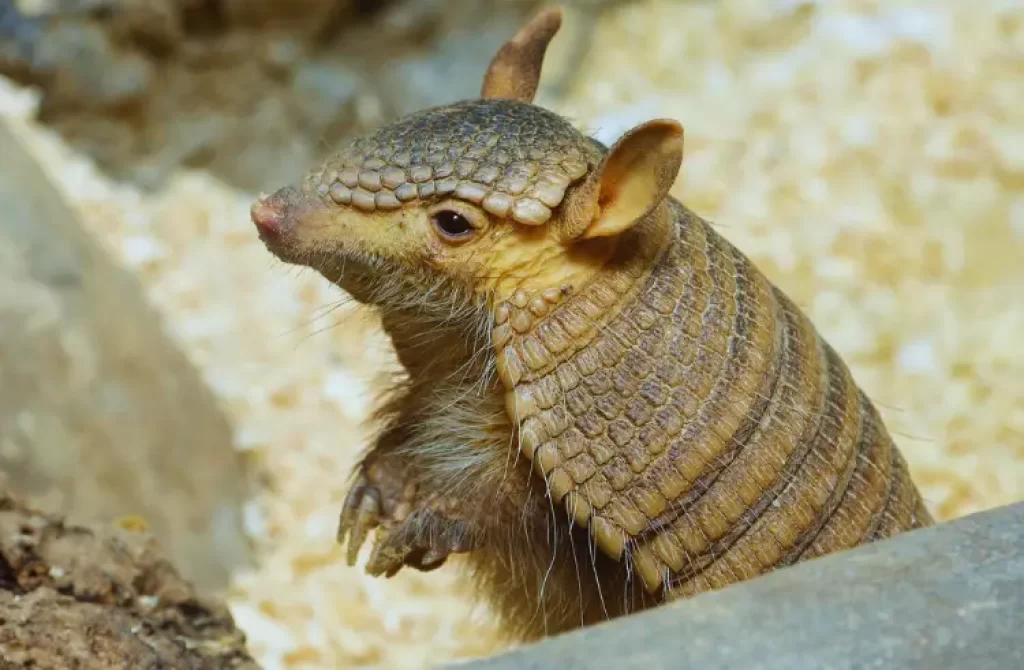
Armadillos are unique mammals known for their armored shells, which provide them with effective protection against predators. Native to the Americas, these intriguing creatures are adapted to a range of environments, from forests to grasslands.
Armadillos have a fascinating ability to roll up into a ball when threatened, with their hard outer shell acting as a shield. They primarily feed on insects, using their sharp claws and long snouts to dig into the ground in search of their prey.
While their armored appearance may make them seem tough, armadillos are relatively gentle and timid animals. They play an important role in their ecosystems by controlling insect populations and aerating the soil with their digging activities.
13. Axolotl
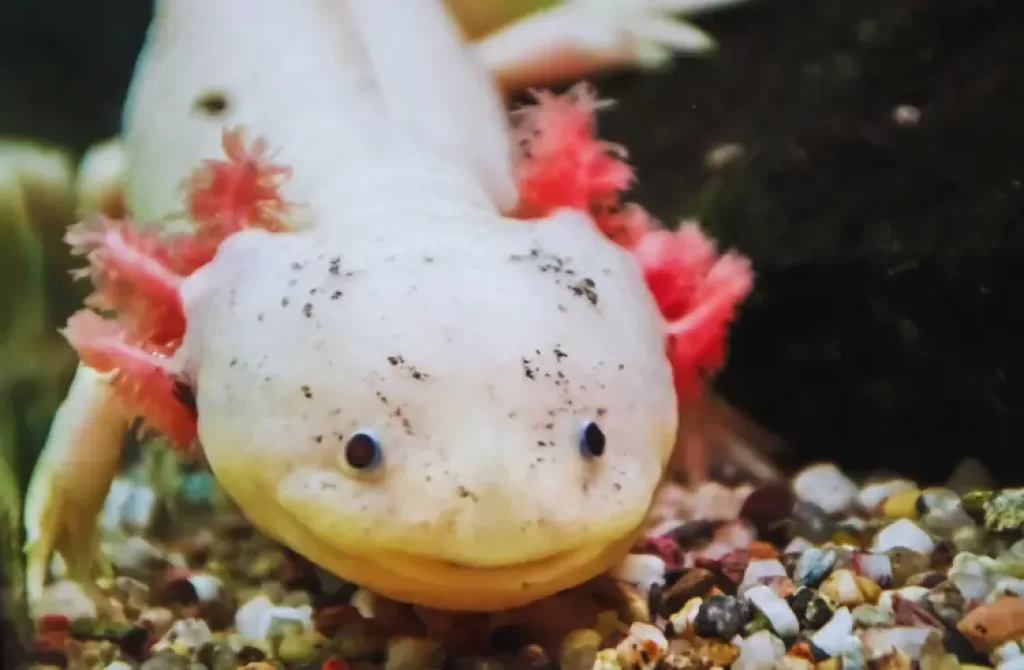
The axolotl is a captivating amphibian that stands out for its unique characteristics and remarkable regenerative abilities. Native to Mexico, this aquatic creature retains its larval form throughout its life, a phenomenon known as neoteny.
With its external gills and feathery external projections, the axolotl exhibits a charming and otherworldly appearance. What truly sets it apart is its incredible regenerative capacity.
If an axolotl loses a limb or sustains an injury, it can regrow the lost body part, including bones, nerves, and even spinal cord tissue. This remarkable ability has made the axolotl a subject of scientific research and has captured the interest of biologists and regenerative medicine enthusiasts worldwide.
14. Aye-aye
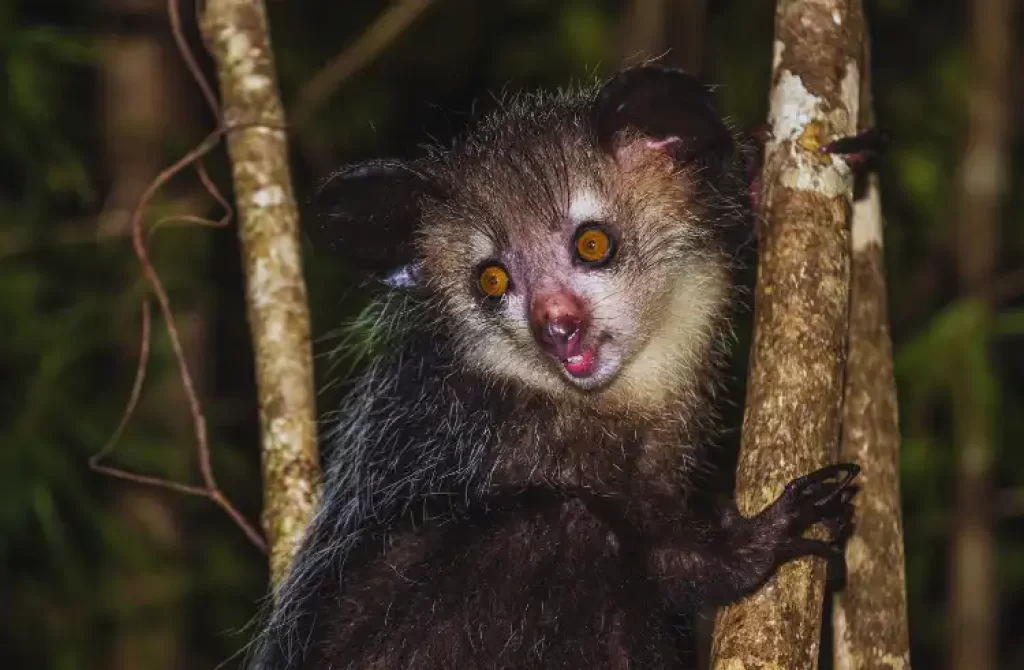
The aye-aye is a peculiar lemur species that calls the island of Madagascar its home. With its large round eyes, bat-like ears, and long, bony fingers, the aye-aye possesses a truly unique and captivating appearance.
It has adapted to a specialized diet, primarily feeding on the grubs found within the bark of trees. Using its elongated middle finger, the aye-aye taps on the wood, listening for the vibrations that indicate the presence of grubs.
Once detected, it skillfully uses its finger to extract the grubs from their hiding places. Sadly, the aye-aye faces significant conservation challenges due to habitat loss and cultural superstitions. Efforts are underway to protect this extraordinary lemur species and ensure its survival in its native habitat.
15. Anemone
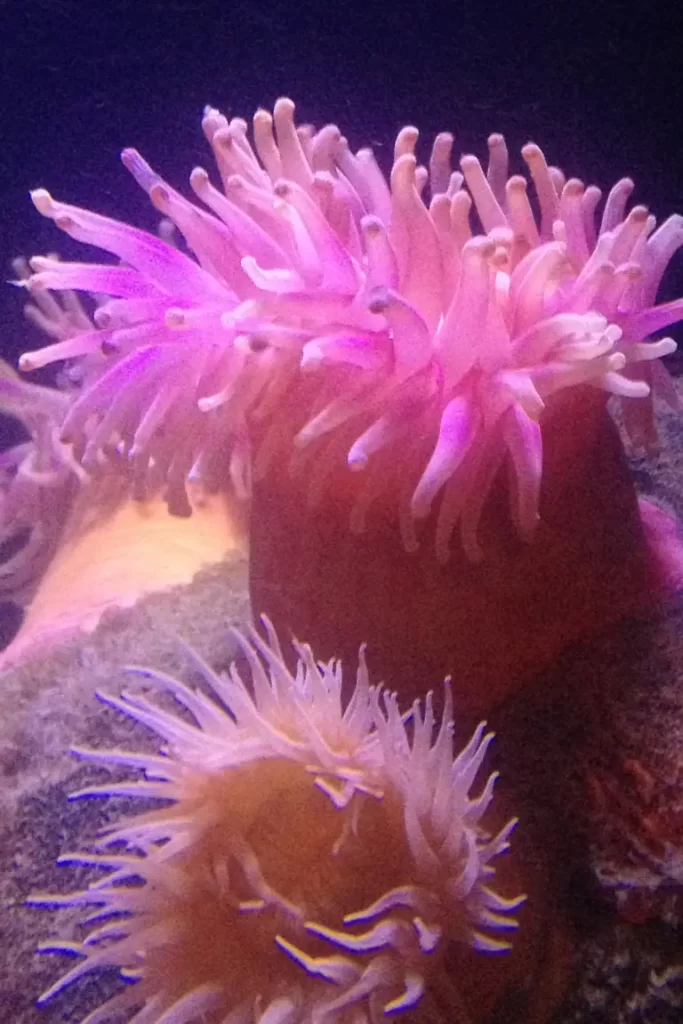
Anemones are enchanting marine creatures that captivate the eyes with their striking beauty and vibrant colors. These animals, often mistaken for underwater flowers, are actually predatory animals belonging to the phylum Cnidaria. Anemones are known for their tentacles, which are armed with stinging cells called cnidocytes.
They use these tentacles to capture small fish, shrimp, and other organisms that come into contact with them.
Anemones have a mutually beneficial relationship with certain species of clownfish, as the clownfish find refuge among the anemone’s tentacles and provide food scraps in return.
This intricate symbiotic relationship showcases the delicate balance and interconnectedness of life in the ocean. Anemones can be found in a variety of marine habitats, from shallow reefs to deep-sea environments, adding a touch of color and wonder to the underwater world.
16. Anglerfish
Deep within the dark depths of the ocean, the anglerfish reigns as a master of adaptation and deception. With its fearsome appearance, complete with sharp teeth and a mouthful of fangs, this remarkable fish is a predator unlike any other.
What truly sets the anglerfish apart is its bioluminescent lure, which dangles from its head like a fishing rod. The glowing lure acts as a beacon in the pitch-black waters, luring unsuspecting prey closer.
Once within reach, the anglerfish swiftly engulfs its target, ensuring a successful hunt in the unforgiving depths.
17. Arctic Fox
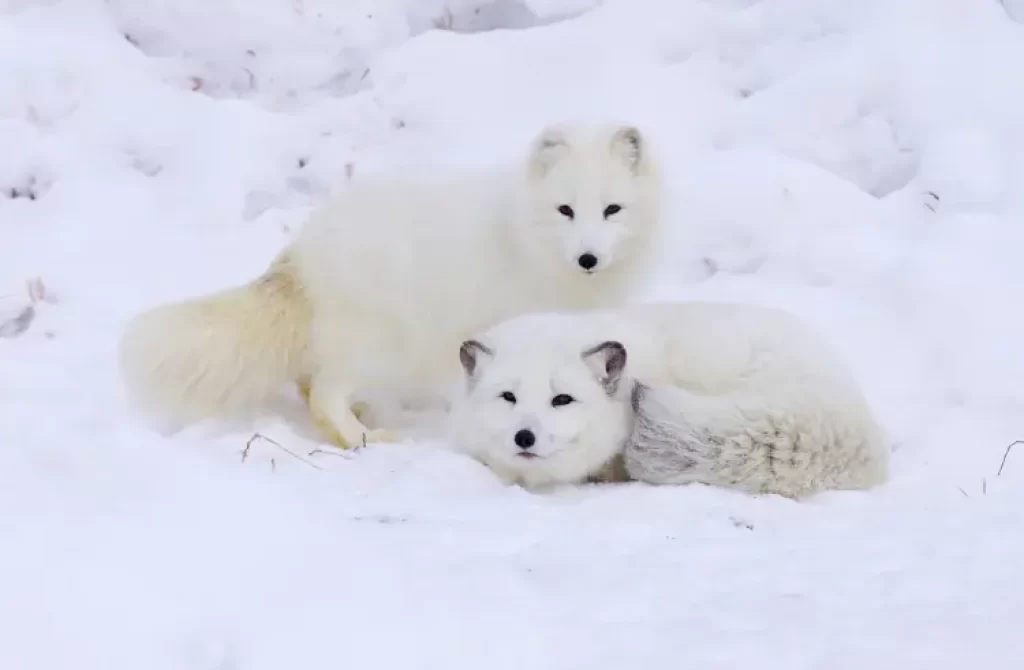
The Arctic fox is a resilient creature that calls the extreme Arctic regions its home. Its thick, plush fur provides insulation against the freezing temperatures, and it even changes color with the seasons, transitioning from snowy white in winter to a mottled gray-brown in the summer.
This natural camouflage allows the Arctic fox to blend seamlessly into its surroundings, making it a skilled predator and a cunning survivor in its icy habitat.
18. Arctic Hare

Hares are incredibly adorable creatures! With their fluffy white fur and adorable faces, they can melt even the coldest of hearts. 🤗 They are the cutest animals in this list of 45 animals with “A”!
In the vast snowy landscapes of the Arctic, the Arctic hare stands out as a symbol of adaptability and resilience. With its long, powerful hind legs, it effortlessly bounds through the snow-covered terrain, reaching remarkable speeds.
The Arctic hare’s dense fur coat acts as a shield against the biting cold, ensuring its survival in one of the harshest environments on Earth.
Equipped with strong claws, it can dig through thick layers of snow to access precious vegetation, which forms the cornerstone of its diet.
19. Arctic Tern
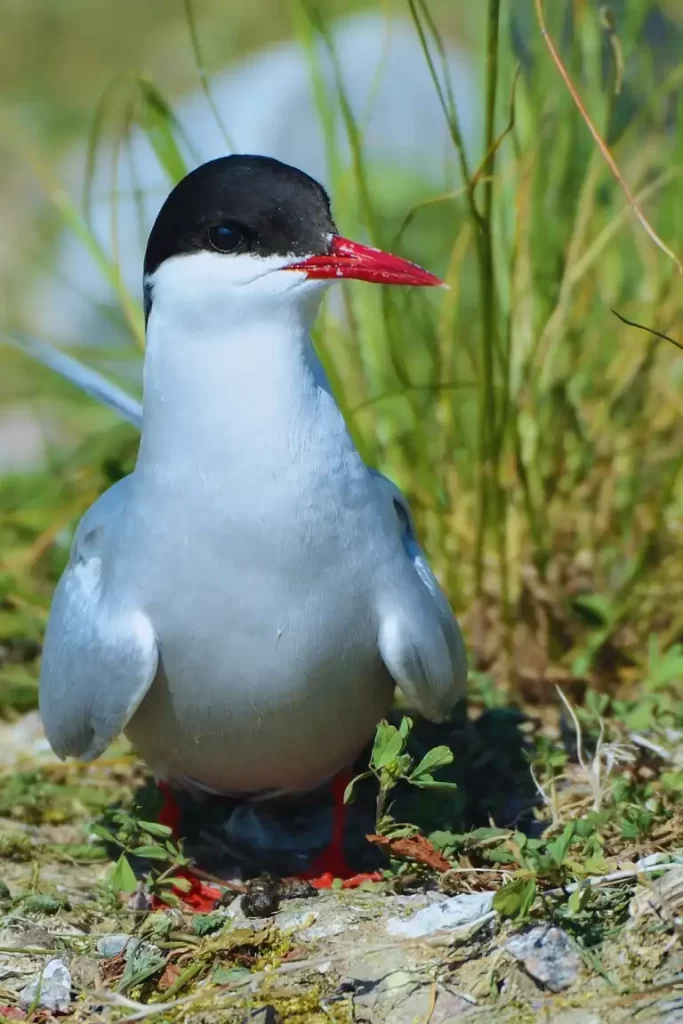
The Arctic tern embarks on an incredible journey that spans the globe, making it one of nature’s most accomplished long-distance travelers. Every year, these birds undertake an astonishing migration from the Arctic to the Antarctic and back again.
Covering thousands of miles, the Arctic tern navigates through treacherous weather conditions and navigates by celestial cues, making use of the Earth’s magnetic field.
This epic migration showcases the remarkable resilience and navigational abilities of this elegant seabird.
20. Archerfish
Imagine a fish that can shoot down its prey with pinpoint accuracy using jets of water expelled from its mouth. Meet the archerfish, a remarkable species known for its unique hunting technique.
Found in tropical and subtropical waters, the archerfish has the extraordinary ability to shoot down insects perched on branches or vegetation above the water’s surface.
It precisely aims and spits a stream of water, knocking the unsuspecting prey into the water where it can be swiftly devoured. This display of precision and ingenuity demonstrates the incredible adaptations found within the animal kingdom.
21. Ass (donkey)
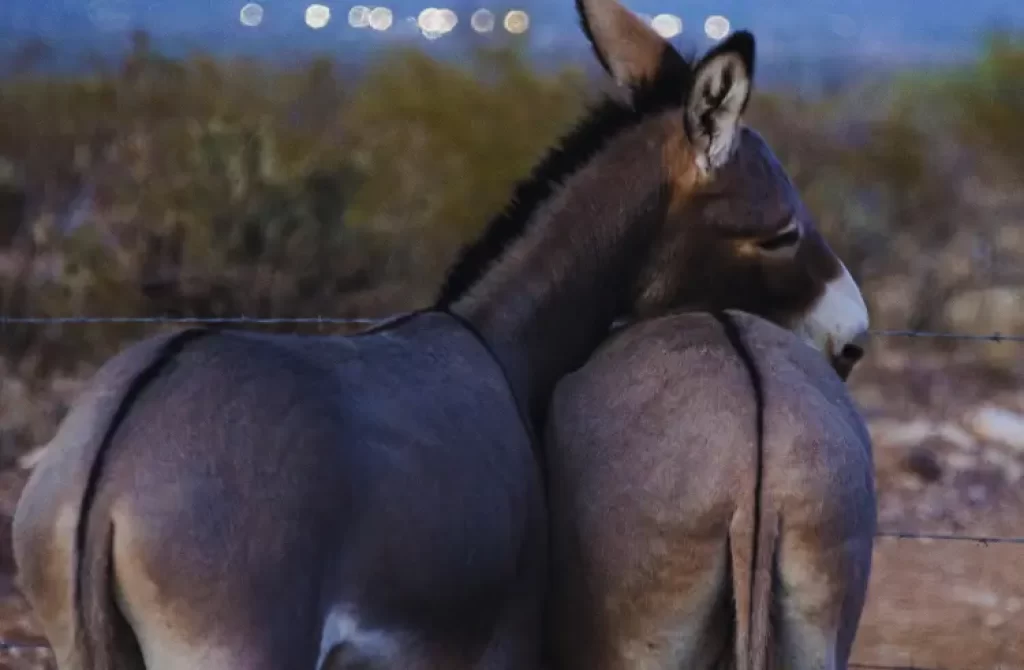
The humble domesticated donkey, known as an ass, has been a trusted companion to humans for centuries. Renowned for its strength, endurance, and sure-footedness, the ass has been instrumental in transportation and carrying loads across diverse terrains.
With its distinctive braying call and gentle disposition, the ass has become a beloved creature in many cultures worldwide.
Its resilience and ability to thrive in harsh conditions have earned it a place in the hearts of farmers, travelers, and animal lovers alike.
22. Australian Cattle Dog

The Australian cattle dog, also known as the blue heeler or Queensland heeler, is a remarkable breed that combines intelligence, agility, and unwavering loyalty.
Originally bred in Australia for herding livestock, this energetic and highly trainable dog possesses a keen intellect and a strong work ethic.
With their striking blue or red speckled coats, these dogs are not only capable herders but also cherished companions known for their unwavering devotion to their human families.
23. Australian Shepherd
The Australian Shepherd, despite its name, originated in the United States during the late 19th century. This intelligent and versatile dog breed quickly gained recognition for its exceptional herding abilities and unwavering loyalty.
Australian Shepherds are renowned for their medium-sized, athletic build and striking coat colors. Their coat can vary from solid black, red, or blue merle to combinations of these shades with white markings. With expressive eyes that can be amber, blue, or brown, they exude intelligence and charm.
Bred to work alongside livestock, Australian Shepherds possess a strong work ethic and boundless energy. They excel in various dog sports, such as obedience, agility, and herding trials.
Highly trainable and eager to please, they also make wonderful family companions and are known for their gentle and affectionate nature.
24. Amazon Parrot
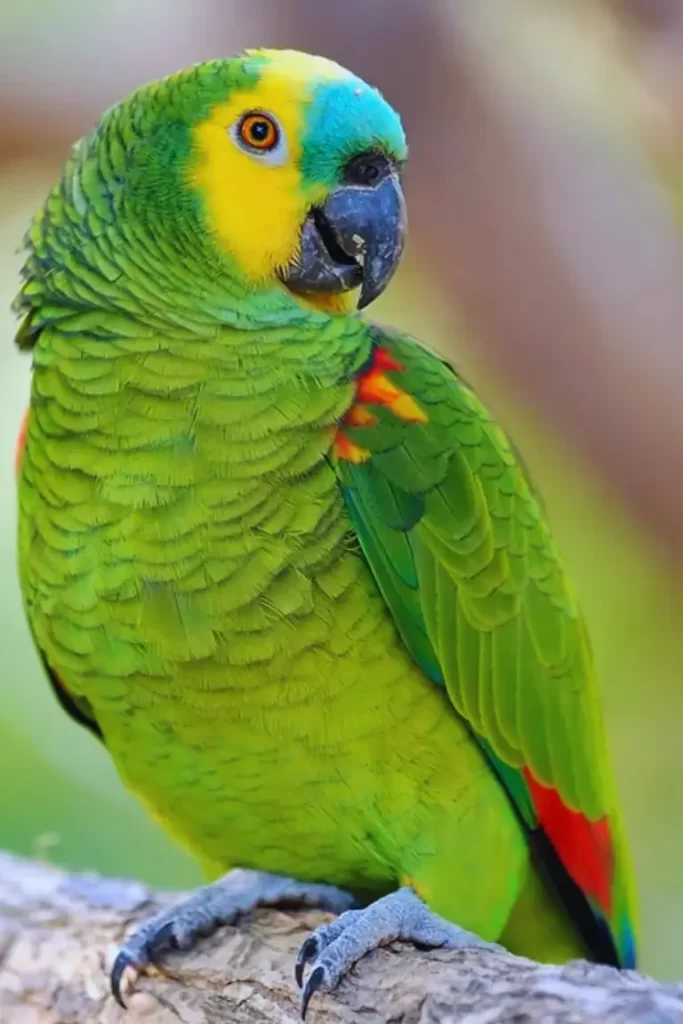
The Amazon parrot is a charismatic and intelligent bird species native to the lush forests of Central and South America. Known for their vibrant plumage and inquisitive nature, Amazon parrots have captured the hearts of bird enthusiasts worldwide.
These parrots exhibit a dazzling array of colors, with shades of green, blue, yellow, and red adorning their feathers.
They possess strong beaks designed for cracking open nuts and seeds, their primary source of sustenance. With their remarkable vocal abilities, Amazon parrots can mimic human speech and produce a wide range of sounds, making them sought-after pets and entertaining companions.
Living in social groups, Amazon parrots display a strong sense of community and engage in complex behaviors.
They are highly adaptable, thriving in diverse habitats, including rainforests, woodlands, and even urban environments. However, due to habitat loss and the pet trade, some species of Amazon parrots are endangered or critically endangered, emphasizing the need for conservation efforts.
25. Azure Damselfly
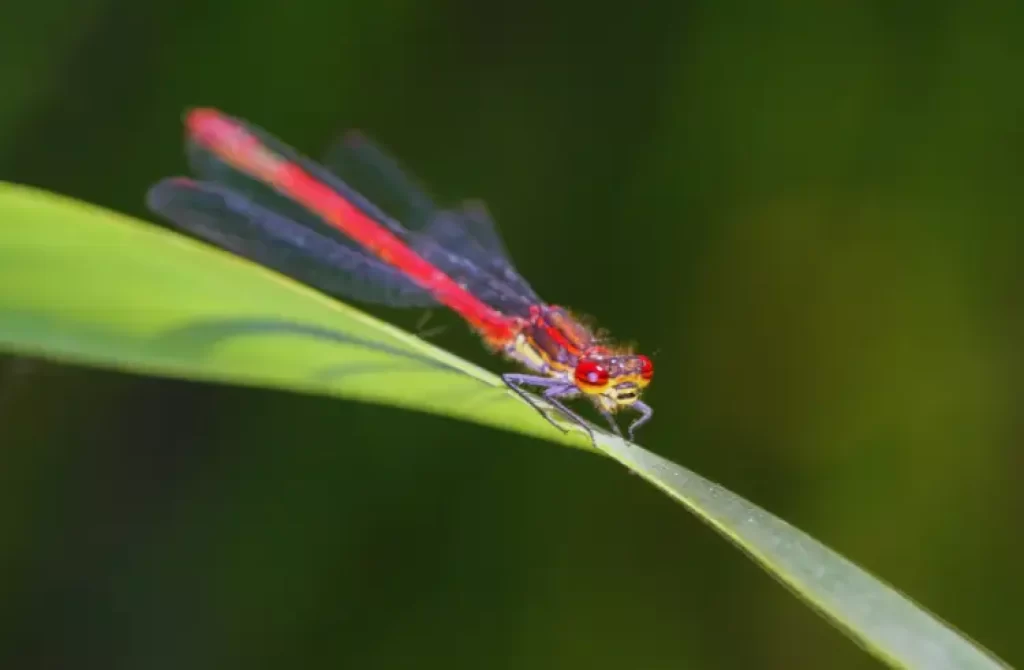
Delicate and ethereal, the azure damselfly graces the banks of ponds and streams with its enchanting presence.
Adorned in stunning shades of blue, it is a sight to behold. With graceful flight and delicate wings, the azure damselfly adds a touch of beauty to its watery habitat.
Like its dragonfly relatives, the azure damselfly undergoes a remarkable transformation, starting its life as an aquatic nymph before emerging as a breathtaking winged adult. Its presence serves as a reminder of the intricate and diverse world of insects that exists all around us.
26. American Robin
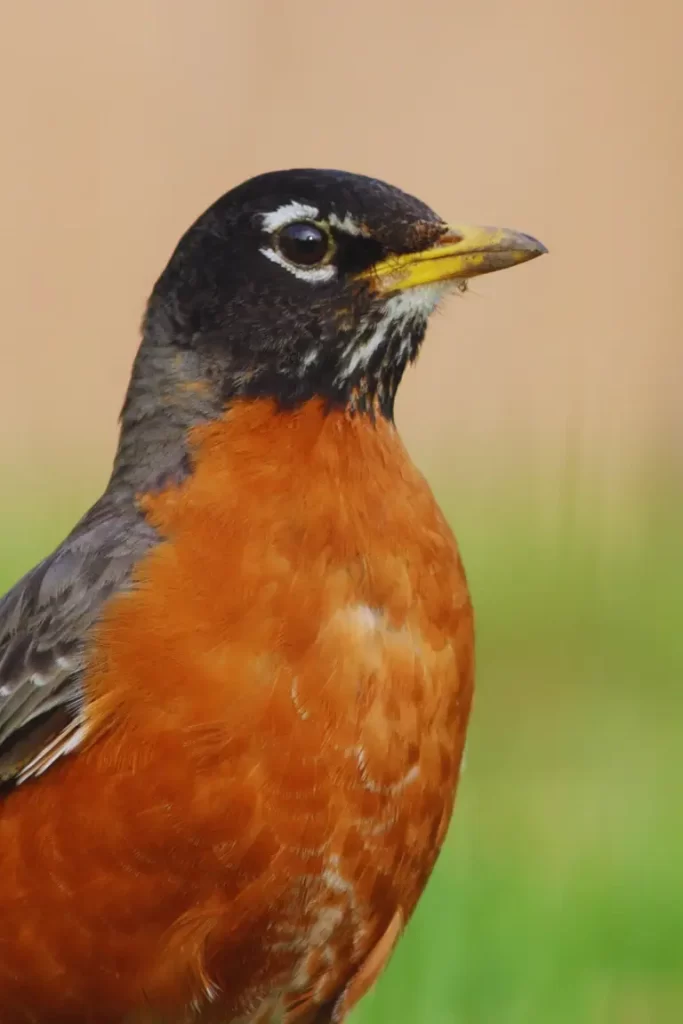
The American robin, with its distinctive reddish-orange breast and melodic song, is a familiar and beloved bird across North America.
These migratory songbirds herald the arrival of spring with their cheerful presence and melodious tunes. The American robin is known for its remarkable foraging abilities, often seen hopping on lawns and turning its head sideways to detect earthworms and insects hidden beneath the surface.
Its adaptability and widespread distribution have made it a cherished symbol of the changing seasons and a delightful companion in gardens and parks.
27. Amur Leopard
Roaming the dense forests of the Russian Far East, the Amur leopard is a true embodiment of grace and resilience.
With its captivating coat adorned with rosette-like spots, it blends seamlessly into its habitat, making it a master of camouflage.
Unfortunately, this magnificent feline is on the brink of extinction, with only a few dozen individuals remaining in the wild.
Habitat loss, poaching, and illegal wildlife trade pose grave threats to its survival, making conservation efforts of utmost importance to preserve this rare and majestic species.
28. African grey parrot
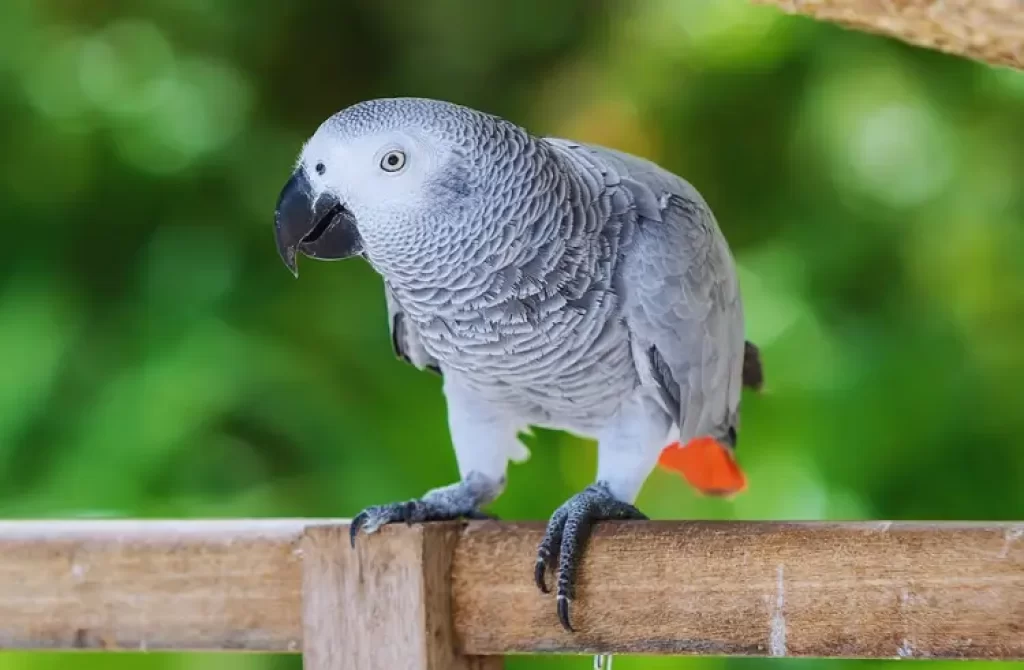
Nestled amidst the lush rainforests of Africa, the African grey parrot captivates both bird enthusiasts and scientists alike with its remarkable intelligence and unparalleled ability to mimic human speech.
These charismatic birds possess an innate curiosity and an exceptional capacity for learning, making them highly sought-after companions and research subjects.
Found primarily in the tropical forests of West and Central Africa, African grey parrots are treasured for their distinctive gray feathers, bright red tail, and enchanting vocal repertoire.
29. Amazon River Dolphin
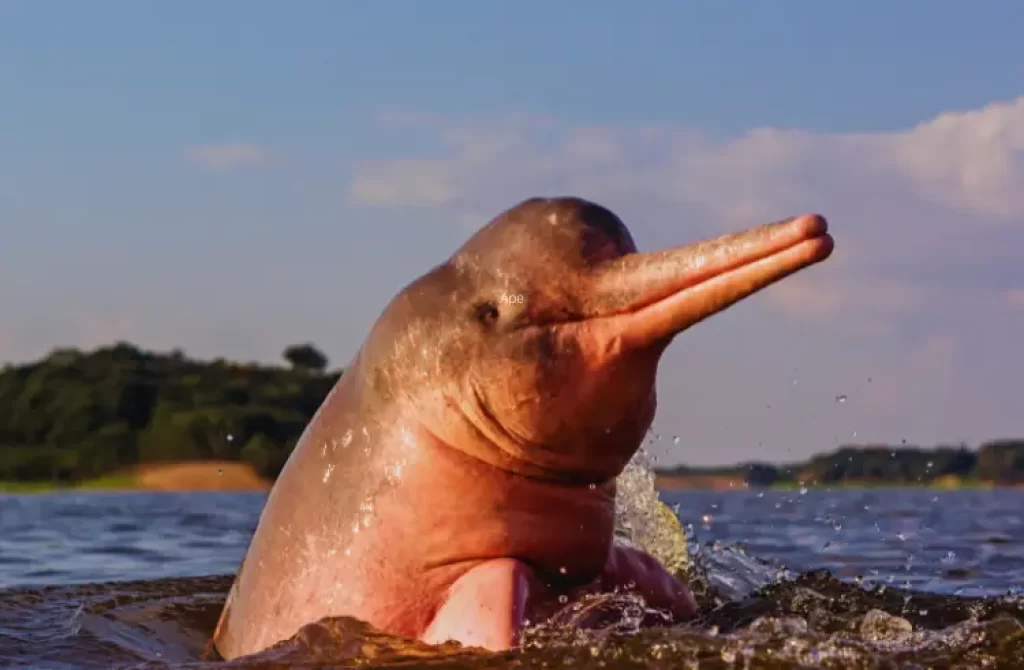
In the mysterious waters of the Amazon basin, the Amazon river dolphin reigns as a symbol of enchantment. With its gentle demeanor and unique pink coloration, it captures the imagination of those fortunate enough to encounter it.
This freshwater mammal navigates the winding rivers of South America, showcasing its remarkable adaptability to the aquatic realm.
Unfortunately, the Amazon river dolphin faces threats from habitat degradation, pollution, and fishing practices, highlighting the need for conservation efforts to protect this captivating species.
30. Asian Elephant
Majestic and awe-inspiring, the Asian elephant roams the lush landscapes of Asia, leaving a trail of admiration in its wake. These gentle giants are characterized by their massive size, distinctive trunk, and impressive tusks.
Renowned for their intelligence, Asian elephants exhibit complex social structures and demonstrate a deep sense of empathy and loyalty.
However, their populations have dwindled due to habitat loss, fragmentation, and poaching, emphasizing the importance of conservation initiatives to safeguard these iconic creatures.
31. Arabian Horse
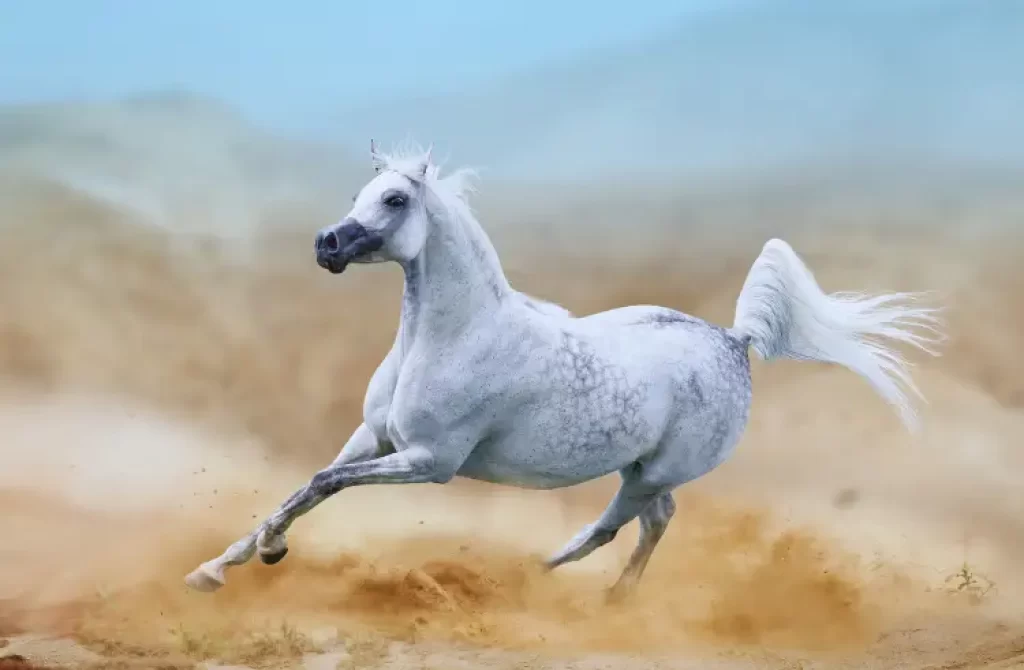
Galloping through the deserts with grace and elegance, the Arabian horse epitomizes the beauty and spirit of equine magnificence.
Originating from the Arabian Peninsula, this ancient breed has captured the hearts of horse enthusiasts worldwide. With their finely chiseled heads, arched necks, and flowing manes, Arabian horses possess an undeniable allure.
Known for their endurance, intelligence, and versatility, they excel in various equestrian disciplines and form unbreakable bonds with their human companions.
32. Atlantic Puffin
Prepare to be enchanted by the Atlantic puffin, a seabird that evokes a sense of whimsy and charm with its vibrant beak and distinctive appearance.
Nesting in colonies along the cliffs and coastal regions of the North Atlantic, these adorable creatures embark on an extraordinary life cycle.
They spend most of their lives at sea, diving underwater with astonishing agility to catch fish, before returning to land to breed and raise their young. Their comical waddling and colorful beaks make them a beloved symbol of coastal wildlife.
33. Atlantic Salmon
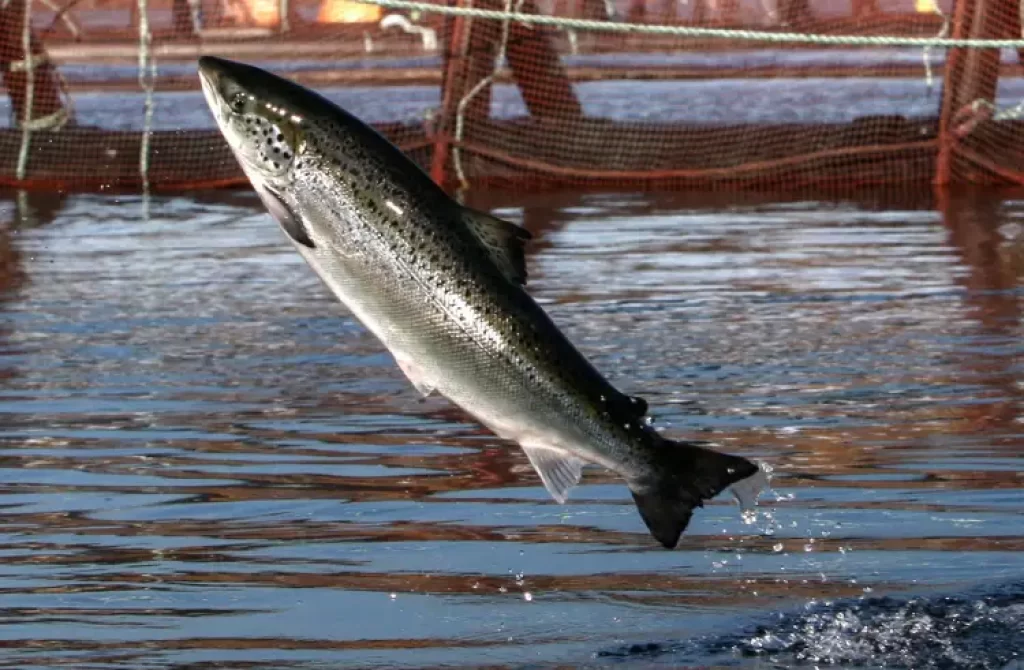
The Atlantic salmon embarks on an epic journey that spans continents and oceans, capturing the imagination of nature enthusiasts.
Born in freshwater rivers, these resilient fish migrate to the vast expanse of the Atlantic Ocean, where they spend several years before returning to their natal streams to spawn.
Their journey is fraught with challenges, including navigating treacherous river currents and avoiding numerous predators. Despite facing obstacles, Atlantic salmon persevere, displaying the remarkable resilience of nature’s most extraordinary travelers.
34. Amethystine Python
The amethystine python, also known as the scrub python, is an awe-inspiring serpent found in the tropical regions of Australia, Indonesia, and Papua New Guinea. Renowned for its size and beauty, it ranks among the largest snake species globally, with some individuals exceeding 20 feet in length.
What sets the amethystine python apart is its stunning coloration. Its scales showcase a mesmerizing range of hues, from dark browns and rich olive greens to shimmering purples that give the snake its name. These colors allow the python to camouflage effectively within the dense vegetation of its habitat.
In their natural environment, amethystine pythons are skilled climbers and swimmers. They primarily feed on a diet of birds and small mammals, ambushing their prey with precision. Despite their size, these snakes are generally non-aggressive toward humans, preferring to avoid confrontation if possible.
35. African Penguin
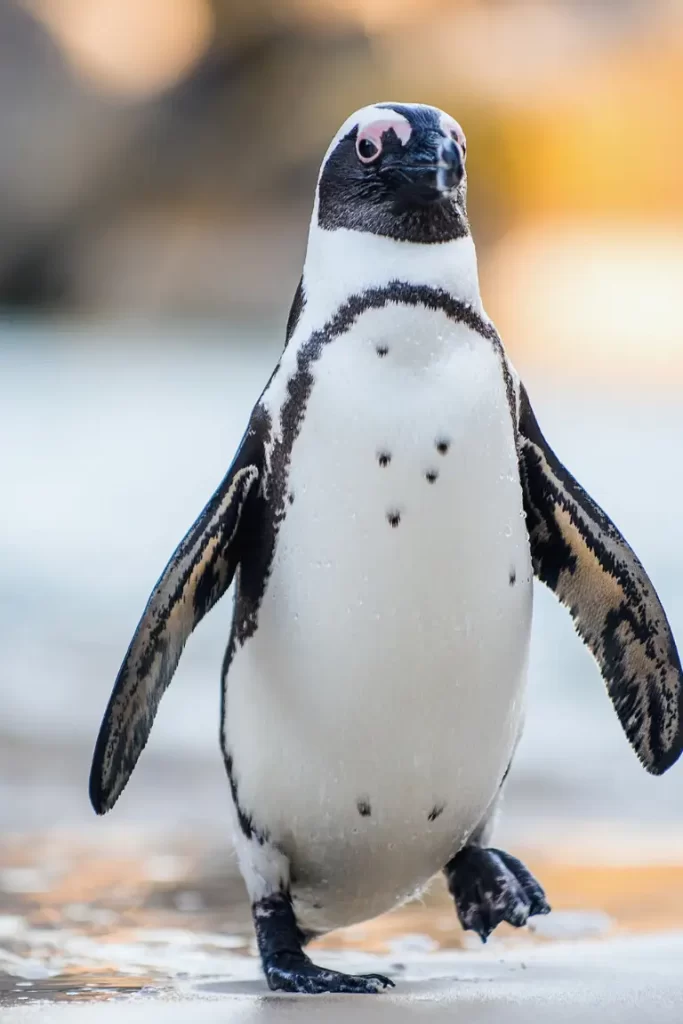
Amidst the rugged coastal landscapes of South Africa and Namibia, a waddling community of African penguins adds a touch of charm and whimsy to the shoreline.
Known for their distinctive black and white plumage, these endearing creatures have become an iconic symbol of African wildlife.
African penguins are highly adapted to their marine environment, utilizing their streamlined bodies and specialized flippers to navigate the waters with remarkable agility.
Their comical antics, devoted parenting, and unique braying calls make them a cherished species in need of conservation attention to protect their diminishing populations.
36. Adélie Penguin
Waddling through the icy Antarctic landscapes, Adélie penguins captivate with their charm and resilience. These striking birds, clad in their formal black and white attire, are perfectly adapted to the harsh conditions of their habitat.
With their streamlined bodies and powerful flippers, they navigate the frigid waters with grace and agility, effortlessly diving in search of fish and krill.
Adélie penguins are also known for their remarkable breeding colonies, where they form tightly-knit communities and exhibit dedicated parenting behaviors, ensuring the survival of their adorable offspring in this inhospitable environment.
37. Arctic Wolf
In the vast icy expanse of the Arctic, the Arctic wolf roams as a master of survival. With its thick, white fur and compact body, it is perfectly suited to withstand the extreme cold temperatures of the region.
These highly adaptable predators possess keen senses and excellent teamwork, allowing them to pursue and capture their prey, which includes muskoxen and Arctic hares.
The Arctic wolf is a symbol of resilience and harmony with nature, embodying the spirit of the frozen wilderness.
38. Alpine Ibex
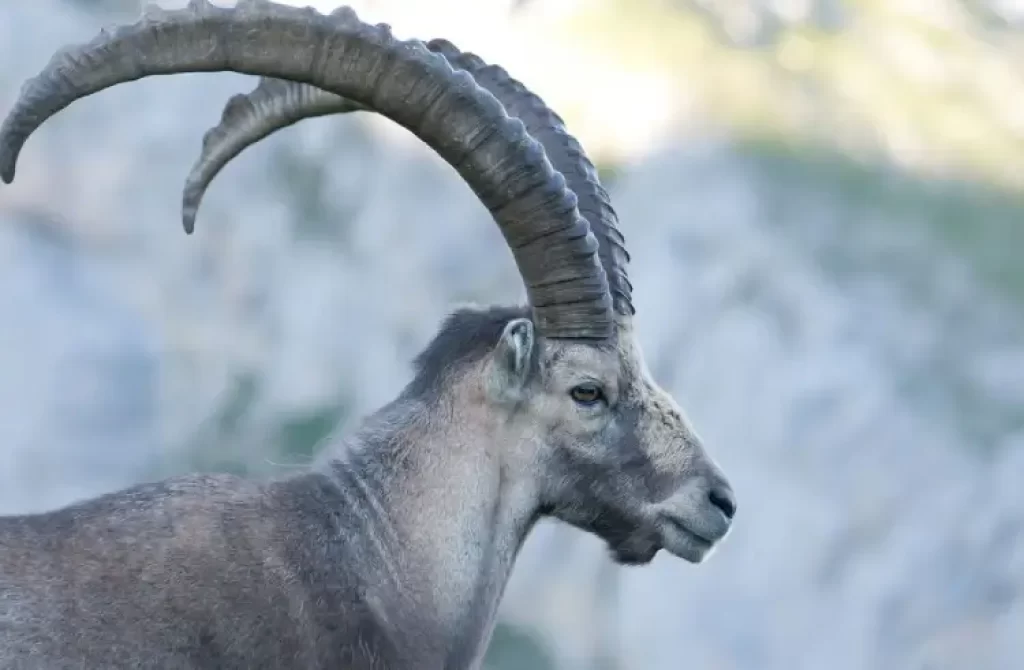
Scaling the steep slopes of the European Alps, the Alpine ibex epitomizes the grace and agility of mountain-dwelling creatures. With their magnificent curved horns, both males and females exhibit an air of majesty.
These sure-footed herbivores have adapted to life in rugged terrains, utilizing their powerful legs and hooves to navigate precipitous cliffs in search of nourishing alpine vegetation.
The sight of a herd of Alpine ibex effortlessly traversing treacherous mountain slopes is a testament to their exceptional adaptations and the splendor of their natural habitat.
39. Atlantic Bluefin Tuna
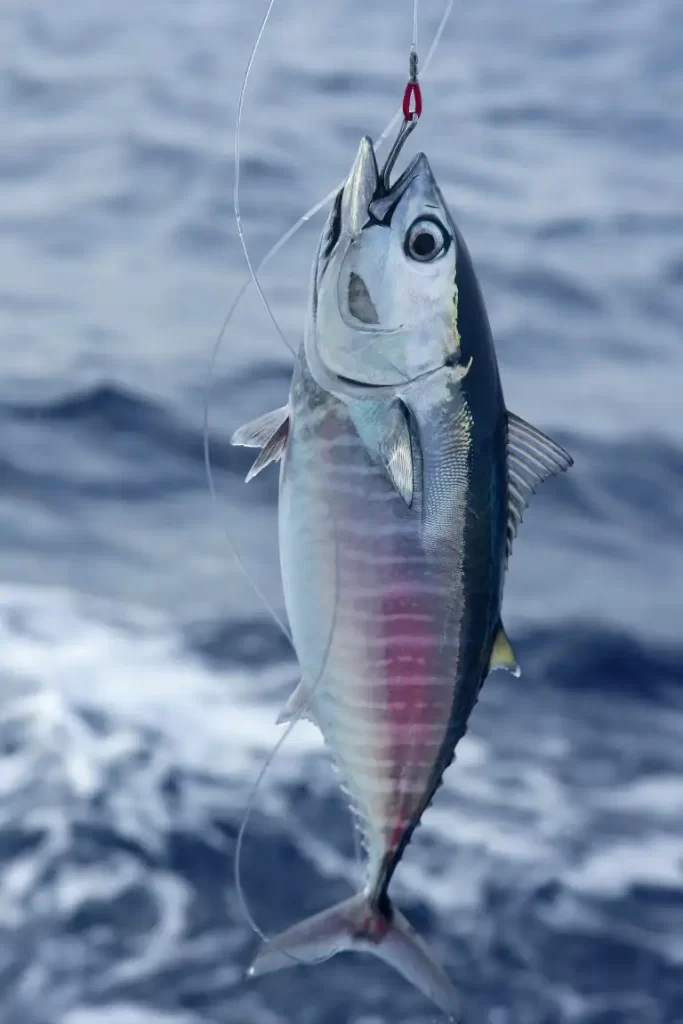
Ruling the depths of the Atlantic Ocean, the Atlantic bluefin tuna commands respect as a true marine titan.
Known for its impressive size and torpedo-like shape, this fast-swimming fish is a marvel of the sea. With streamlined bodies and powerful muscles, Atlantic bluefin tuna are capable of reaching incredible speeds, making them formidable predators.
These magnificent creatures undertake remarkable migrations, crossing vast distances in search of food and spawning grounds.
Unfortunately, due to overfishing and habitat degradation, their populations have declined, underscoring the urgent need for conservation efforts to protect their remarkable species.
40. African Rock Python
The African rock python is a remarkable snake species found in the diverse ecosystems of sub-Saharan Africa. Renowned for its size and strength, this constrictor is among the largest snakes in the world. With lengths reaching up to 20 feet or more, the African rock python is a formidable predator capable of subduing even large prey.
This python species displays an array of captivating patterns on its scales, ranging from earthy browns to vibrant yellows and blacks.
These markings allow the snake to blend seamlessly into its surroundings, making it a stealthy hunter. The African rock python primarily feeds on a variety of mammals, including antelopes, rodents, and occasionally even crocodiles.
41. African Wild Dog
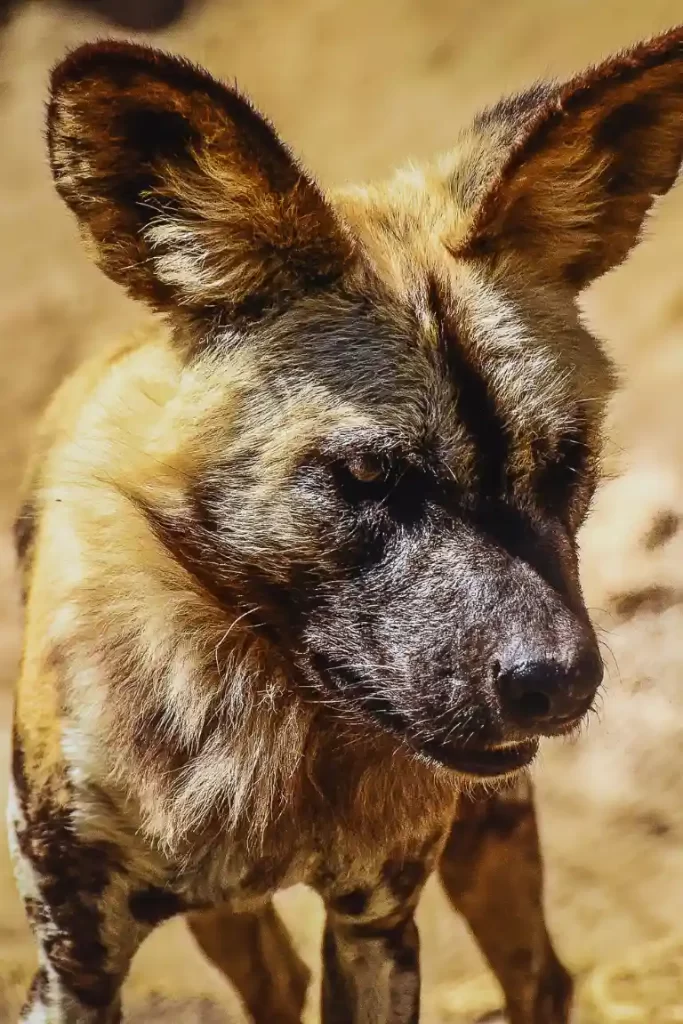
Unleashing the wild spirit of the African savannah, African wild dogs embody the essence of teamwork and social cohesion.
These charismatic predators, adorned with intricate coat patterns resembling a vibrant artwork, navigate the grasslands of sub-Saharan Africa with unmatched grace.
African wild dogs are highly efficient hunters, relying on their exceptional stamina and coordinated pack strategies to bring down their prey.
Their tight-knit social structure and cooperative hunting techniques ensure the survival of the entire pack, fostering a sense of unity and camaraderie in the heart of the wilderness.
42. Agouti
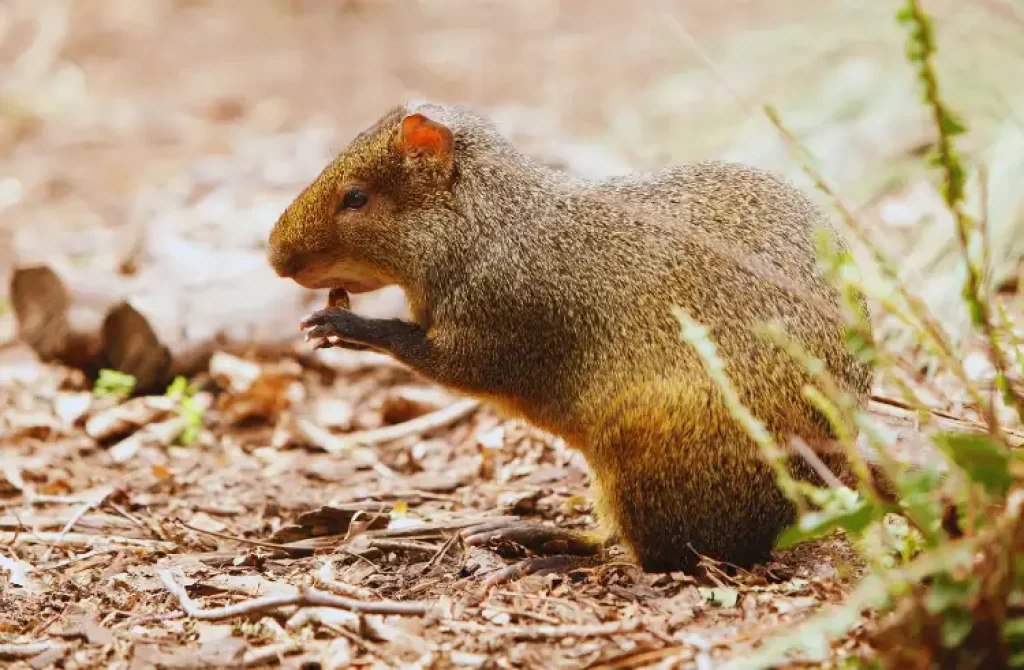
Amidst the lush rainforests of Central and South America, the agouti scurries through the undergrowth, playing a vital role in the circle of life.
Resembling a large rodent, these endearing creatures contribute to the dispersal of seeds, acting as vital gardeners of the tropical forests they inhabit.
With their sharp senses and nimble movements, agoutis aid in the regeneration and diversity of plant species, forging a harmonious relationship between flora and fauna.
These elusive creatures, with their integral ecological function, serve as silent heroes in the thriving tapestry of their vibrant habitats.
43. Amazon Tree Boa
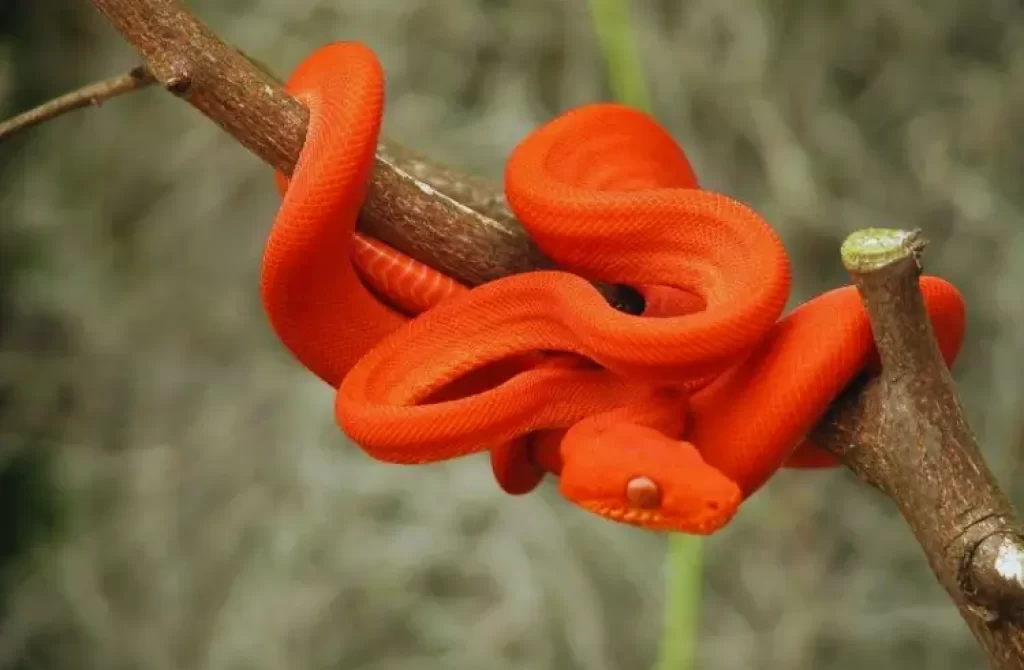
Coiling amidst the verdant embrace of the Amazon rainforest, the Amazon tree boa is a mesmerizing serpent of the shadows.
With its sinuous body and keen eyes, it skillfully navigates the lush foliage, showcasing its remarkable climbing abilities.
This non-venomous snake, adorned with striking patterns and colors, blends seamlessly into its arboreal surroundings. With the aid of its prehensile tail, the Amazon tree boa maneuvers effortlessly through the branches, ever watchful for unsuspecting prey.
As a vital component of the rainforest ecosystem, it plays a crucial role in regulating rodent populations and maintaining the delicate balance of nature.
44. American Goldfinch
The American goldfinch is a delightful songbird native to North America. With its bright yellow plumage, contrasting black wings, and a touch of white on its wings and tail, this small bird is a vibrant addition to any landscape.
During the breeding season, the male American goldfinch displays its vivid yellow feathers, which serve as an advertisement of its availability to potential mates. In contrast, the female maintains a more subdued appearance, blending in with the surrounding vegetation for protective purposes.
American goldfinches are highly adaptable and can be found in various habitats, including open fields, meadows, and gardens. They possess a delightful musical voice and are known for their cheerful and melodic songs, which add a harmonious touch to nature’s symphony.
These agile birds have a unique diet, primarily consisting of seeds from plants such as sunflowers, thistles, and dandelions. Their specialized beaks enable them to extract seeds with precision, making them important contributors to seed dispersal and the overall health of ecosystems.
45. Asiatic Black Bear
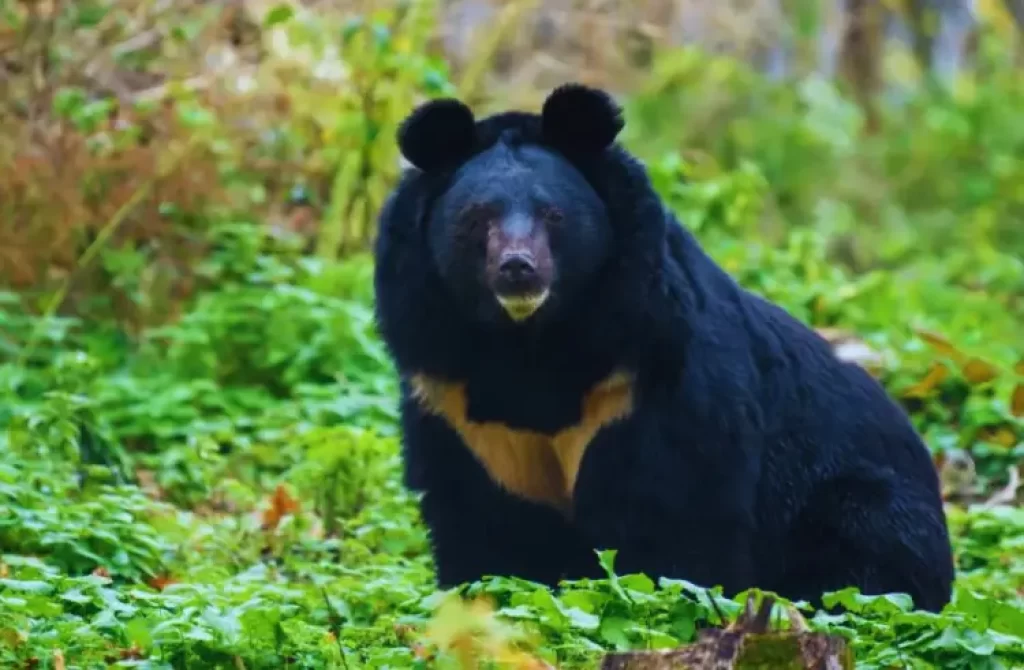
Last on our list of animals that start with A is the Asiatic black bear. Roaming the dense forests of Asia, the Asiatic black bear, also known as the moon bear, casts an enchanting silhouette amidst the ancient trees.
With its jet-black fur and a distinct V-shaped patch on its chest, it emanates an aura of mystery and strength.
These omnivorous bears possess an insatiable appetite for honey, fruit, and vegetation, foraging tirelessly to sustain themselves.
The Asiatic black bear, though facing numerous threats including habitat loss and poaching, remains an emblem of resilience, symbolizing the profound connection between wildlife and the majestic forests they call home.







